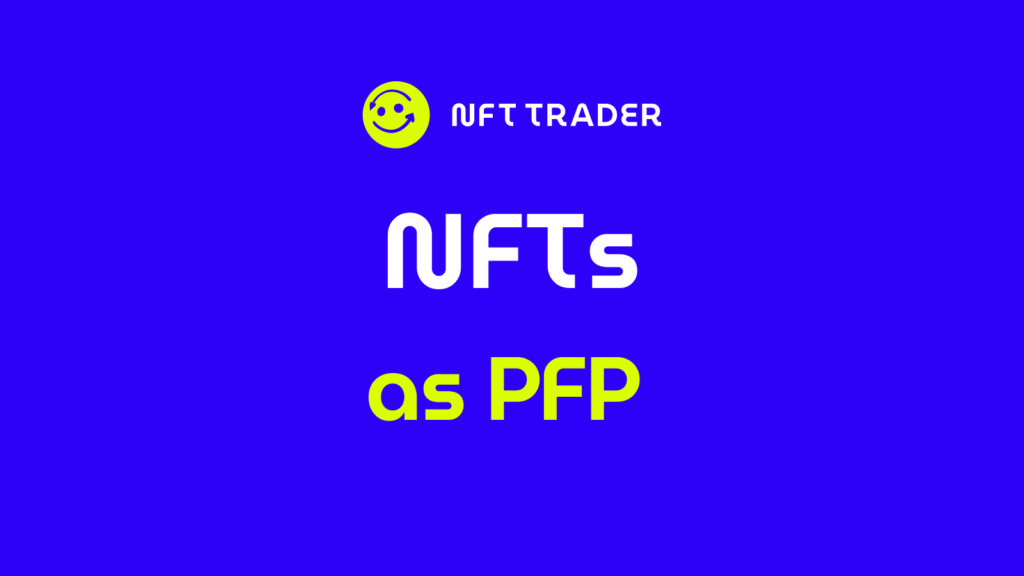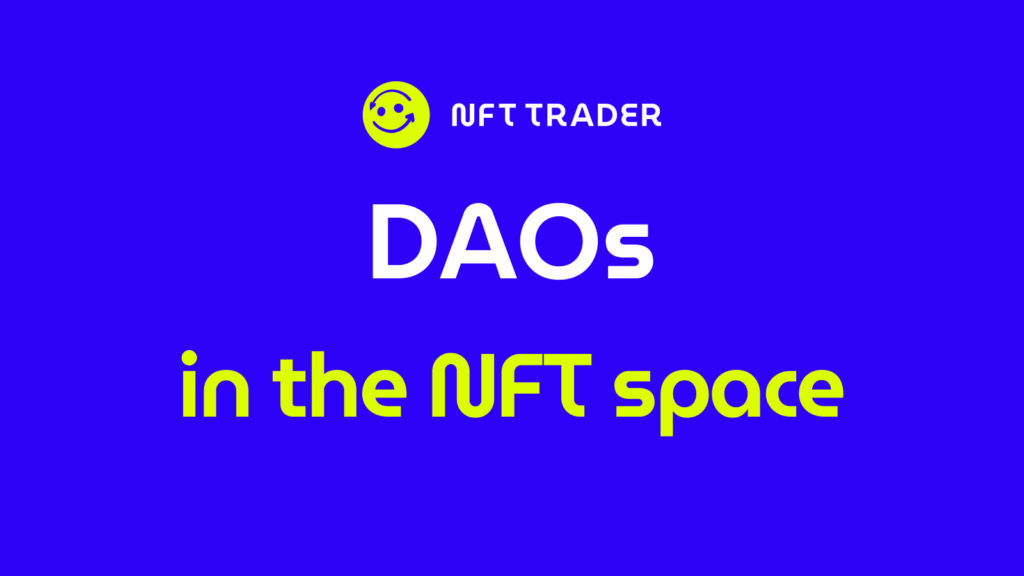Personalizing Your Online Presence: How to Use NFTs as Profile Pictures

In the ever-evolving digital landscape, the concept of personalizing one’s online presence has taken on new dimensions with the advent of Non-Fungible Tokens (NFTs). NFTs have emerged as a groundbreaking technology that allows individuals to not only express their unique identity but also to assert ownership and authenticity in the virtual world. This transformative innovation has redefined how we perceive and interact with digital assets, enabling individuals to infuse their online presence with unprecedented individuality and exclusivity.
Summary:
- Overview of NFTs
- What are NFT profile pictures?
- How to setup an NFT profile picture?
- Benefits of using NFTs as profile pictures
Overview of NFTs:
Non-Fungible Tokens (NFTs) are a form of digital asset that represent ownership and uniqueness in the digital realm. Unlike cryptocurrencies such as Bitcoin or Ethereum, which are fungible and can be exchanged on a one-to-one basis, NFTs are one-of-a-kind digital assets. Each NFT is distinct, carrying a unique identifier on a blockchain, which acts as an immutable ledger of ownership and provenance.
NFTs have gained widespread recognition for their ability to personalize online presence in various ways:
- Digital Art and Collectibles: NFTs have revolutionized the art world by allowing artists to create, tokenize, and sell their digital artwork as NFTs. This has enabled artists to gain recognition, control their work’s scarcity, and receive royalties from secondary sales. Collectors, in turn, can own and display these digital artworks as badges of personal identity.
- Virtual Real Estate: In virtual worlds and metaverse platforms, NFTs are used to represent ownership of virtual real estate, such as virtual land, buildings, or unique in-game assets. This ownership provides users with a platform to build their digital presence and establish unique spaces.
- Personal Branding: NFTs empower individuals to create and sell NFTs representing personal brand elements, including logos, avatars, or digital fashion items. These tokens can be used to assert one’s identity across social media platforms, websites, and virtual environments.
- Music and Entertainment: Musicians and content creators are leveraging NFTs to release exclusive content, concert tickets, and experiences to their fans. This not only personalizes their online presence but also provides fans with a deeper connection to their favorite artists.
- Virtual Identities: NFTs enable the creation of unique digital identities, often referred to as “avatars,” which users can customize and take with them across various online platforms, fostering consistency and personalization in the virtual world.
- Authentication and Ownership: NFTs provide a secure and transparent way to prove ownership and authenticity of digital assets, reducing the risk of plagiarism and counterfeiting. This, in turn, enhances the trustworthiness of an individual’s online presence.
In summary, NFTs have ushered in a new era of personalization in the digital realm, allowing individuals to express their uniqueness, assert ownership, and establish a distinct online presence. As this technology continues to evolve, it holds the potential to redefine how we interact with and represent ourselves in the increasingly interconnected world of the internet.
What are NFT profile pictures?
Non-Fungible Tokens (NFTs) are digital assets that serve as a unique representation of ownership and authenticity on the blockchain. Unlike traditional cryptocurrencies, NFTs are one-of-a-kind and cannot be exchanged on a like-for-like basis. This inherent uniqueness is what makes NFTs particularly compelling for personalizing one’s online presence, especially as profile pictures. By attaching an NFT to their profile picture, individuals can establish a distinct and verifiable digital identity. This uniqueness is crucial in the online world where impersonation, plagiarism, and identity theft are prevalent concerns. NFTs provide a reliable means to demonstrate that a particular profile picture or digital avatar belongs to a specific individual, bolstering trust and credibility in the online realm. The importance of NFTs in online representation lies not only in asserting one’s identity but also in redefining the concept of ownership in the digital age, where the boundaries between the physical and virtual worlds continue to blur.
How to setup an NFT profile picture?
How to set a NFT profile picture on X (Twitter)?
Setting an NFT as your profile picture on Twitter is a unique way to personalize your online presence and showcase your ownership of a digital asset. Here’s a step-by-step guide on how to do it:
- Acquire an NFT: First, you need to acquire an NFT that you’d like to use as your profile picture. You can obtain NFTs through various NFT marketplaces like, Rarible, or specialized platforms associated with the NFT’s creator or project.
- Wallet Setup: Ensure you have a cryptocurrency wallet that supports the NFT standard used by your digital asset (usually Ethereum-based ERC-721 or ERC-1155 tokens). Popular wallets include MetaMask and Trust Wallet. Fund your wallet with enough cryptocurrency to cover any gas fees
- Connect Your Wallet to Twitter: Access your Twitter account and go to your profile. Look for the “Edit profile” button, usually represented by an “Edit Profile” or “Edit” link. Click on it.
- Upload the NFT: In the profile editing section, you will typically see an option to change your profile picture or avatar. Click on this option. Select “NFT” as the Upload Source: Some NFT marketplaces and Twitter may have integrated features that allow you to connect your wallet directly. If not, you can save the NFT image to your device.
- Authenticate and Sign: If you’re using a wallet extension like MetaMask, you’ll likely be prompted to sign a message to prove ownership of the NFT. Confirm this action, and the NFT image will be associated with your Twitter profile.
- Crop and Set: After the authentication is complete, you may need to crop or adjust the NFT image to fit Twitter’s profile picture dimensions. Ensure it looks how you want it to appear, and then select “Set as Profile Picture” or equivalent.
- Save Changes: Finally, save the changes to your Twitter profile. The NFT image is now your profile picture.
- Verification: Consider adding a tweet or bio update to inform your followers that your profile picture is indeed an NFT and provide a link to the NFT’s transaction or marketplace page for verification.
Remember that the exact steps may vary slightly depending on Twitter’s interface and any updates to their features. Also, keep in mind that the option to set an NFT as a profile picture directly on Twitter might evolve, so it’s a good idea to check Twitter’s help center or support for the most current instructions.
How to set a NFT profile picture on Instagram?
Instagram does not have built-in functionality to directly set an NFT as a profile picture. Instagram primarily allows users to upload images or photos from their device’s gallery as profile pictures. However, you can still showcase your NFT ownership and personalize your Instagram profile in the following way:
- Select an NFT Image: Choose the NFT you want to feature on your Instagram profile. Ensure that you own the NFT and have access to an image representing it.
- Prepare the Image: Save or capture an image of your NFT to your device, making sure it’s in a suitable format and resolution for Instagram.
- Edit the Image (if needed): Use an image editing app or software to crop and adjust the image to the dimensions and format recommended by Instagram for profile pictures, typically a square image.
- Upload to Instagram: Open the Instagram app on your mobile device and log in to your account.
- Go to Your Profile: Tap your profile picture or icon at the bottom right to access your profile page.
- Edit Profile: Once on your profile, tap “Edit Profile” just below your username.
- Change Profile Picture: Select “Change Profile Photo” or a similar option.
- Choose the NFT Image: Locate and select the edited NFT image from your device’s photo gallery.
- Crop and Save: Instagram may allow you to adjust the image within a circular frame.
- Position the image as desired, and tap “Done” or “Save” to set it as your profile picture.
- Update Bio or Caption: To provide context to your followers, you can update your Instagram bio or post a caption mentioning that your profile picture represents an NFT. Consider including links or information to verify the NFT’s authenticity.
Please note that Instagram’s features and capabilities may change over time, so it’s a good idea to check Instagram’s official resources or help center for any updates or new functionalities related to profile picture customization or NFT integration. Instagram is also a platform where you can share and promote your NFT collection and connect with others who share similar interests in the NFT space.
How to set a NFT profile picture on Discord?
Discord does not have built-in functionality for directly setting an NFT as a profile picture. However, you can still showcase your NFT ownership and personalize your Discord profile by following these steps:
- Choose an NFT: Start by selecting the NFT you want to use as your profile picture on Discord. Ensure that you own the NFT, and it’s accessible through your wallet.
- Prepare the Image: Take a screenshot or save an image of your NFT to your device. Make sure it’s in an appropriate format and resolution for use as a profile picture.
- Edit and Resize: Utilize image editing software or apps to crop and resize the image to meet Discord’s profile picture dimensions, which are typically square.
- Upload to Discord: Open the Discord app or access it through your web browser and log in to your account.
- Access User Settings: Click on the gear-shaped “User Settings” icon located at the bottom left of the Discord window, typically near your username.
- Choose “Edit”: From the left-hand menu within User Settings, select the “Edit” option under your profile.
- Upload the NFT Image: Locate and choose the edited NFT image from your device’s files.
- Crop and Confirm: Discord may allow you to adjust the image within a circular or square frame. Position the image as you like, and click “Save” or “Confirm” to set it as your profile picture.
- Update Status or Bio: Consider updating your Discord status or bio to inform your server members or friends that your profile picture represents an NFT and provide additional information or links for verification.
Please keep in mind that Discord’s features and functionalities may evolve over time, so it’s advisable to check Discord’s official documentation or support resources for any updates or new integrations related to NFTs or profile picture customization. Additionally, Discord provides a platform for sharing your NFT interests and connecting with like-minded individuals in various servers and communities.
Benefits of using NFTs as profile pictures
Using NFTs as profile pictures offers a multitude of advantages that extend beyond conventional digital avatars. Firstly, it introduces a profound sense of uniqueness. Each NFT is inherently distinct, and by setting one as a profile picture, individuals can assert their exclusive ownership in the digital realm, mitigating concerns related to impersonation and identity theft.
Furthermore, NFTs allow for unparalleled self-expression. Users can select NFTs that resonate with their personality, interests, or affiliations, thereby creating a more personalized and authentic online presence. This self-expression is not limited to static images; NFTs can also represent dynamic, evolving aspects of one’s identity.
Another key advantage is the direct support for artists and creators. By showcasing NFTs as profile pictures, individuals contribute to the visibility and value of digital artworks, empowering artists to thrive in the burgeoning NFT ecosystem. This direct connection between creators and their audience fosters a stronger sense of community and patronage, bridging the gap between the virtual and real worlds.
In essence, utilizing NFTs as profile pictures transcends the conventional boundaries of online identity, offering a powerful means of expressing individuality, supporting artists, and enhancing digital authenticity. It represents a glimpse into the future of online presence, where the ownership of digital assets becomes an integral part of one’s virtual identity.



